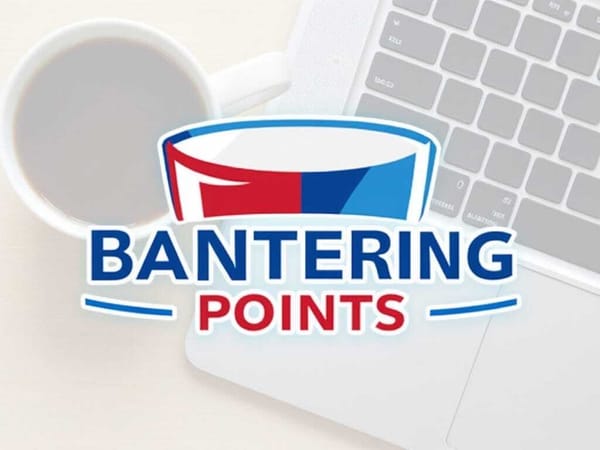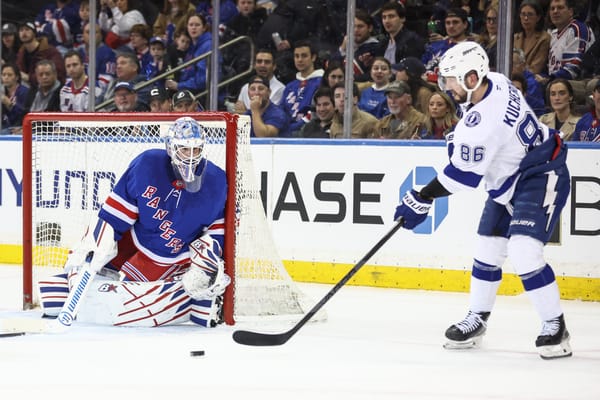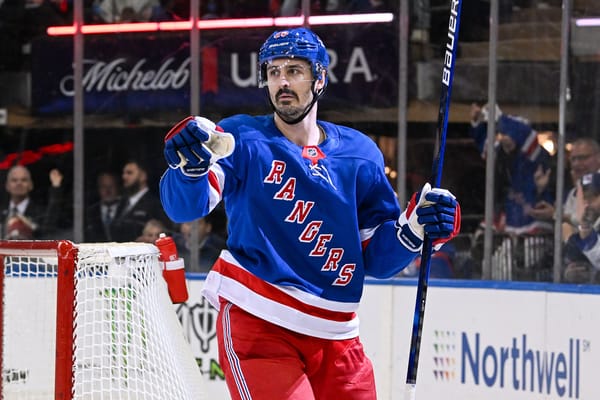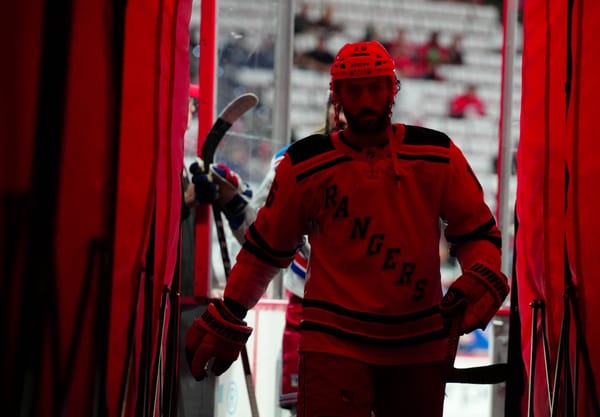PROSPECT UPDATE: Hunter Skinner is Probably Better Than We Gave Him Credit For
Following the 2019 NHL Draft, we at Blueshirt Banter gave the Rangers a mostly positive review. The only real criticism was of the team’s use of their fourth-round pick. Our analysis of Hunter Skinner — and let me be clear that it was almost exclusively mine — was fairly harsh. In our summer analysis of the Rangers’ prospect pool. Skinner ranked 35th out of 39 prospects. Here is part of that scouting report.
“Over the last decade the Rangers have constantly taken chances on big defensemen who don’t put up points, and not once has it paid off. Dylan McIlrath. Samuel Noreau. Sergey Zborovskiy. Simon Kjellberg. The list goes on. Will Skinner be the exception? Maybe. He has an outside chance as a 3rd-pair, penalty-killing defenseman. But this sure feels history repeating itself.”
Fast forward to now, and Skinner has 22 points in 24 games for the OHL’s London Knights. A far cry from a defenseman who “doesn’t put up points.” What’s going on here? Are the numbers a mirage, or did we just completely get it wrong?
There are many contributing factors here. Yes, Skinner is definitely benefiting from some puck luck as well as a loaded London Knights team. Some of Skinner’s points have been fairly soft in nature, where his contribution to the goal was either incidental or accidental. Here are a few examples (Skinner is #83 in white).
Assists where he’s getting a fortunate bounce off the boards or a weak rebound from the goaltender help his team win, but they don’t really offer much in terms of long-term projection of his game. Neither do the assists where he’s making a simple pass to teammates who then do the bulk of the work to make a goal happen. London is loaded with talented players such as Liam Foudy, Connor McMichael, Ryan Merkley, and Antonio Stranges.
Skinner has still earned his share, though. One thing we did credit him with over the summer was a booming shot. He has put that to use in the OHL.
However, 19 of his 24 points are assists. And while some, as mentioned, were incidental or fortunate, he has still created some offense himself.
Okay, so nobody is going to watch these clips and confuse him with Tony DeAngelo. Still, he’s proven capable enough. He can skate with the puck without falling over. He can make a good first pass through the neutral zone. He has decent agility and maintains possession while under pressure.
Contrast that with what I wrote back in July.
“However, he does not do much in possession of the puck. Five goals and 19 assists in 52 USHL games is mediocre production at best. What’s more, he tends to handle the puck like a grenade. A lot of defensive zone turnovers. Numerous missed stick blades on attempted passes from the defensive zone and through the neutral zone. Not every defenseman has to be a big point producer, but his struggles to play a role in pushing play forward can kill shifts.”
Some of this is probably that Skinner has improved. Development isn’t linear, and that’s what makes projecting prospects so difficult. I think some of Skinner’s talent may have also been hidden in the USHL. It can be a tough league for young players to transition into, and he may have been forced into the league before he was ready. He’s also spent time at forward, only recently making a full-time commitment to the blue line.
“I liked his skill set in minor hockey. He was just real raw,” said one NHL scout. “He was always rushed through. I remember he was supposed to play U16 but he was plucked to go to the USHL when he maybe wasn’t ready.”
It’s probably also fair to say, though, that I somewhat whiffed in my analysis of his talent. Yes, part of that was probably due to the circumstances in the USHL, but I imagine that preconceived notions also distorted my mindset as I watched him for the first time. The problem with “watching the games” is that video can tell you anything you want. Someone could put together a highlight package of Sidney Crosby turnovers and missed defensive assignments and try to convince you he’s a liability, and someone could isolate enough Vlad Namestnikov video to make a case that he’s an offensive superstar. Every player makes good and bad plays.
Point being, when watching Skinner for the first time knowing that his point production was limited, confirmation bias likely made it easy to find examples of his offensive failures. That’s of course not an agenda, but a reality of the imperfections of “watching the games.” Biases mold what we focus on and what we diminish.
I was less concerned about the defensive side of Skinner’s game. He’s 6’2 and pushing 190 pounds, which is pretty big for an 18-year-old. With London, he’s played a very physical game, using his strength to separate puck carriers from the puck. He also makes good reads in the defensive zone. I don’t see him caught out of position much and he gets in the way of dangerous passes.
One thing that has impressed me, though, is his gap control. He’s not a burner, but his footwork and straight-line pace are strong enough that he can steer even the best skaters out of danger. Here is an example against Jean-Luc Foudy, who is one of the best skaters in all of junior hockey.
As it pertains to his NHL upside, my scouting report of Skinner was more or less accurate in terms of his strengths and weaknesses. There should be concerns about whether his skating is good enough. It’s not clear whether he will be able to make enough plays with the puck through the neutral zone and create offense. However, I put a lot of periods where there should instead have been question marks. Sure, Skinner is a major project and faces an uphill battle to make the NHL, but that’s true of almost every fourth-round pick. It was premature at best to virtually write him off and consider the pick wasted.
As far as his long-term outlook, next season should be far more telling. London is a great team and Skinner is currently third on the defensive depth chart behind Ryan Merkley and Alec Regula. Once those two graduate to pro hockey next season, Skinner will have a far more pronounced role in all situations for London, and we’ll get a much better feel for where his true talents lie. For now, he’s certainly at least a relevant prospect; something I wouldn’t have given him credit for six months ago.




